L&T: EPC Expert in Airport Construction
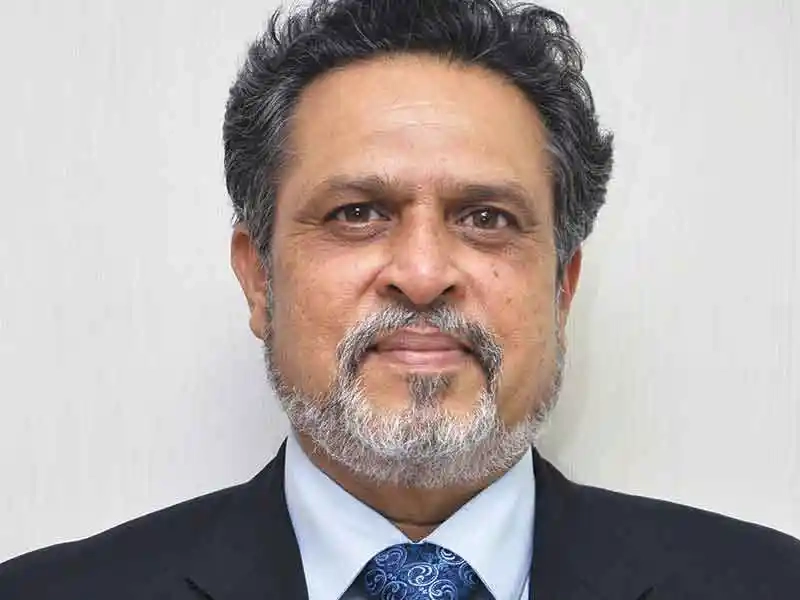
How do you see the opportunities in India’s infrastructure construction sector, particularly airports, with a stable government at the centre?
The murmurings surrounding Indian infrastructure has become louder with the continuity of a stable government at the centre. India is expected to become the 3rd largest construction market globally by 2022. Statistics reveal that ₹50 trillion (US$ 777.73 billion) worth of investment is required by 2022 in the infrastructure sector, to ensure sustainable development. During FY 2018-19, infrastructure and capital good companies saw a 30% growth in order inflows from ₹2.05 trillion (US$ 32 billion) to ₹2.67 trillion (US$ 41.53 billion), which is a ready reckoner to gauge the country’s growth.
Public expenditure in infrastructure fuels the economy that spurs growth and employment, and it will be one of the government’s priorities to frame policies to make this happen.
In terms of emergent sectors, roads, highways and railways will continue a strong momentum, and so will airports. During FY14 to FY17, air passenger traffic shot up by 57% and aircraft traffic rose 33%. India’s aviation sector is growing at a very impressive rate of 20% plus, which means that in every three years, the sector is doubling.
The impediment to growth is the current state of airport infrastructure and the financial health of the airline industry. The airline sector can meet the demand only through innovative financial models and opening of the sector to FDI. Indian carriers are all set to induct over 900 new aircraft over the next 7 to 8 years. India needs to treble the capacity of its airports for which airport infrastructure needs to catch up. The Airports Authority of India (AAI) aims to bring around 250 airports under operation across the country by 2020, having already developed and upgraded 23 metro airports in the last 5 years. AAI also plans to develop city-side infrastructure at 13 regional airports across India, with help from private players to build hotels, car parks and other facilities, and thereby boost their revenues, that can be ploughed back into upgrading existing facilities.
As the government’s UDAN Policy has gained traction, the civil aviation ministry has laid out the ground rules to ensure regional connectivity. The Government of Andhra Pradesh, for example, has plans to develop six greenfield airports at Nizamabad, Nellore, Kurnool, Ramagundam, Tadepalligudem and Kothagudem under the PPP model. Another 22 airports are to be connected under the regional connectivity scheme of AAI and some 30 airport development projects are under way across various regions in Northeast India. AAI plans to develop over 20 airports in tier II and III cities in the next 5 years and 56 new airports are expected to become functional in the country over the next few years.
The private players in the airport infrastructure segment – GVK, GMR, Farifax, Adani, etc. – have laid out plans to expand the existing infrastructure and are on the lookout to expand their footprint.
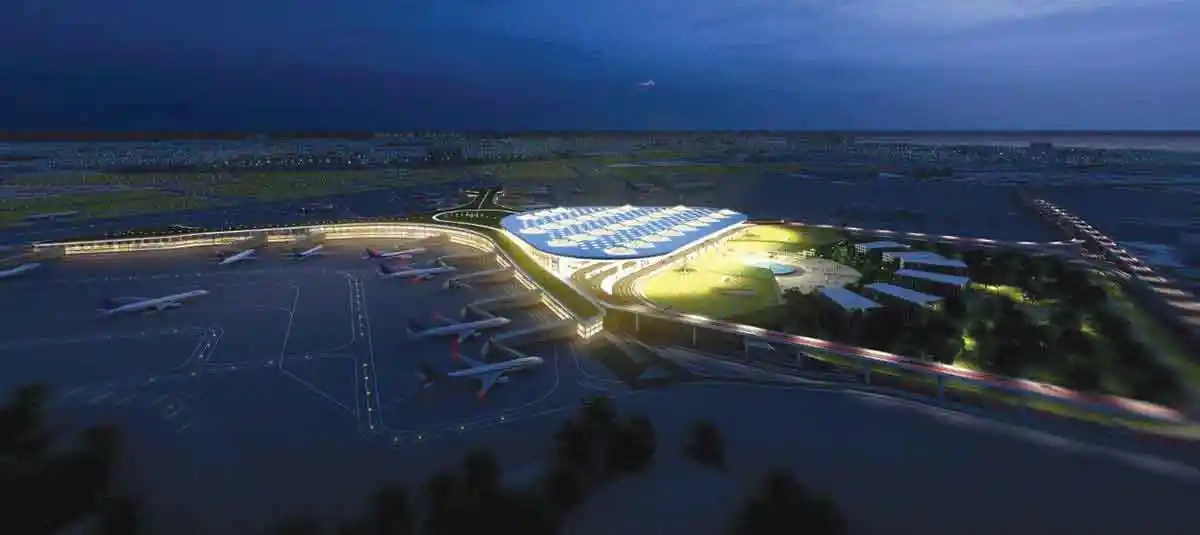
There is a long way to travel. However, with a stable government at the centre, a quick turnaround time can be expected to implement a framework arrangement for developing more airports which should fix the current foreseen capacity deficit.
From being a luxury segment, air travel has now become a necessity, which augurs well for the economy in general. India requires $40 billion of investment to create fresh airport capacity. The AAI is planning to spend over `21,000 crore ($3.2 billion) between 2018-22 to build new terminals and expand capacity of existing ones. In the last year, the plan outlay for airport infrastructure was to the tune of about $2.5 billion.
As one of the largest EPC contractors, what major challenges do you have to contend with in airport construction projects?
It would not be a misnomer to consider an airport as a city that never sleeps; a unique place where families reunite and part ways, where C-suite professionals hop flights to close business deals and make up for that perfect last-minute retail experience. A population that migrates with every flight makes the dynamics to design an airport challenging, more so with the ever-widening diversity in the passenger profile.
Unlike other building projects, airports involve almost all the engineering disciplines, making it one of the most complex projects to design, construct, integrate and commission. Different stakeholders are involved at various stages of an airport project. Be it the local legislative body, airlines, police, retail facility managers, airport authorities, CISF, DGCA, BCPO, airport operators, immigration or fire authorities, each have their own set of regulations that are rarely ever compromised. Coordination amongst each of these authorities are a major challenge when the design is finalized, as also is obtaining building permits within the stipulated timeframes.
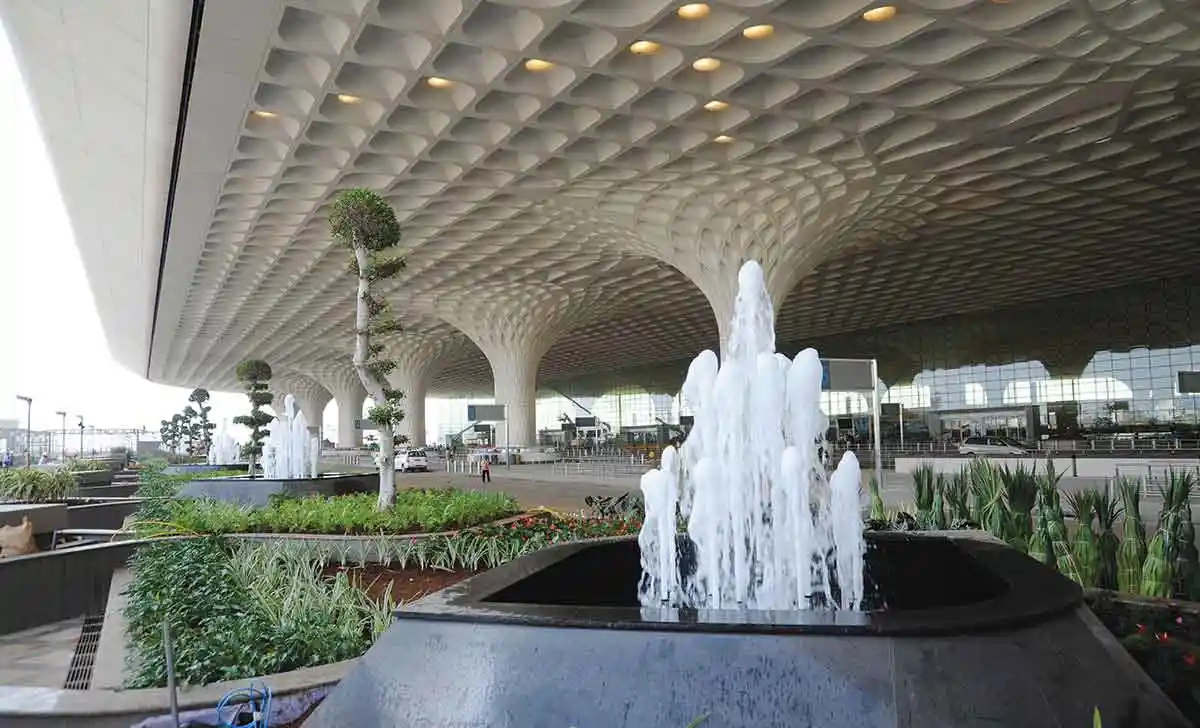
Airports being the first port of entry, remain a bone of contention when it comes to National Security. The design must incorporate components for disrupting attempts by terrorists /smugglers or other threat agents targeting airport locations and infrastructure. Furthermore, provisions must be incorporated for flexibility in the security design to enable inclusion of unscheduled enhanced security solutions that may be required to respond to new, emerging threats, and incorporation of next generation technologies.
L&T has been working to ensure flood simulation modelling and other simulations to meet adverse conditions at airports and other large-scale projects that help designers to predict, take more informed decisions and thereby reduce risks to a large extent. Airport aprons and taxi ways are built in compliance with FAA regulations following internationally accepted norms, with adequate slopes and friction to ensure smooth movement. However, specific issues due to oversight of pilots may not amount to change in design efforts as almost all the guidelines for airport aprons, taxiways, runways are guided by ICAO guidelines. To combat the issues of heavy rainfall, airports normally have alternate drainage systems to avoid water logging and ensure safe conditions for aircraft operations.
Presently, there are a significant number of brownfield airports being developed in the country that inherently come with issues of coordination within an operating airport while undertaking construction work for expansion works. Coordinating the simultaneous movement of the passenger and construction traffic are challenging for the EPC contractor while carrying out the landside works. The air-side works need to be invariably carried out during the off-peak timings and requires coordination with all relevant authorities manning the operations of a functioning airport. To allay any security concerns, movement of each resource to and from the project site location needs security clearance from the CISF, which results in unavoidable hold ups that require deft and careful planning to ensure seamless progression of works.
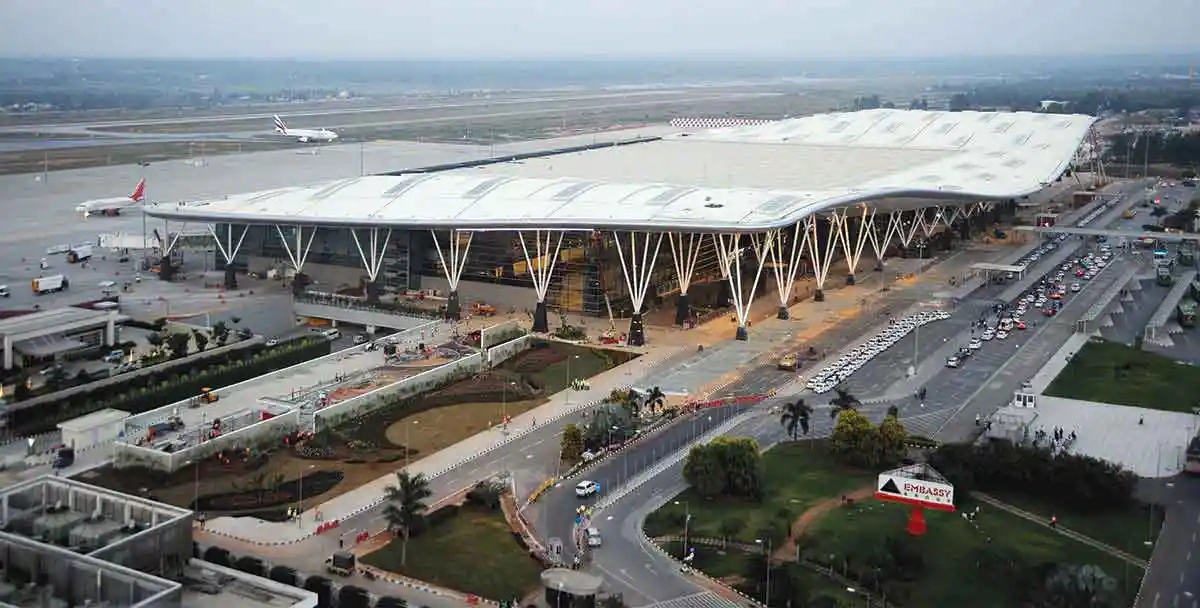
Each airport adopts the latest technology from across the globe so that the passengers don’t have a culture shock when travelling across continents. The airports that L&T are currently constructing come with self-baggage drop facilities, face recognition kiosks for boarding, e-gate equipment, etc. which present a seamless journey experience for passengers. Integrating such cutting-edge technologies into the works is challenging since the protocols for their operation are yet to be established in India. Many of the airport components need to be imported. With infrastructure being an important sector for national development, the government needs to look at easing import requirements for global sourcing.
Codal provisions which capture only stand-alone building requirements need refurbishment to encapsulate the multi-dimensional and mega format structures like airports. These need upgrades soon to enable developers to plan and economize the capex. Land reforms are another area that needs to be relooked at.
While the Americans (with Boeing) and the French (with Airbus) vie with each other to have the major pie in the sky by upping the ante on the 787s and A380s, the airport systems like passenger boarding bridges and fuelling points have to be suitably organized to accommodate these mammoth aircrafts. Due consideration must be given to how the fleet mix may change when the airport begins operations so that the facilities won’t require an upgrade.
Lack of competent personnel with expertise in airport systems to manage the design, planning and construction phases of the project is yet another major challenge for the industry as such, which makes dependency on experts from outside the country inevitable. Labour reforms as well as incentivising personnel to stay abreast of global norms will go a long way to attract and retain good talent, although there are signs that India will soon have her own breed of home-grown specialists in every facet of airport design and construction. L&T with the bandwidth in EPC airport construction over the last decade and a half, does have such professionals in its fold, though far more are required to meet the burgeoning demand.
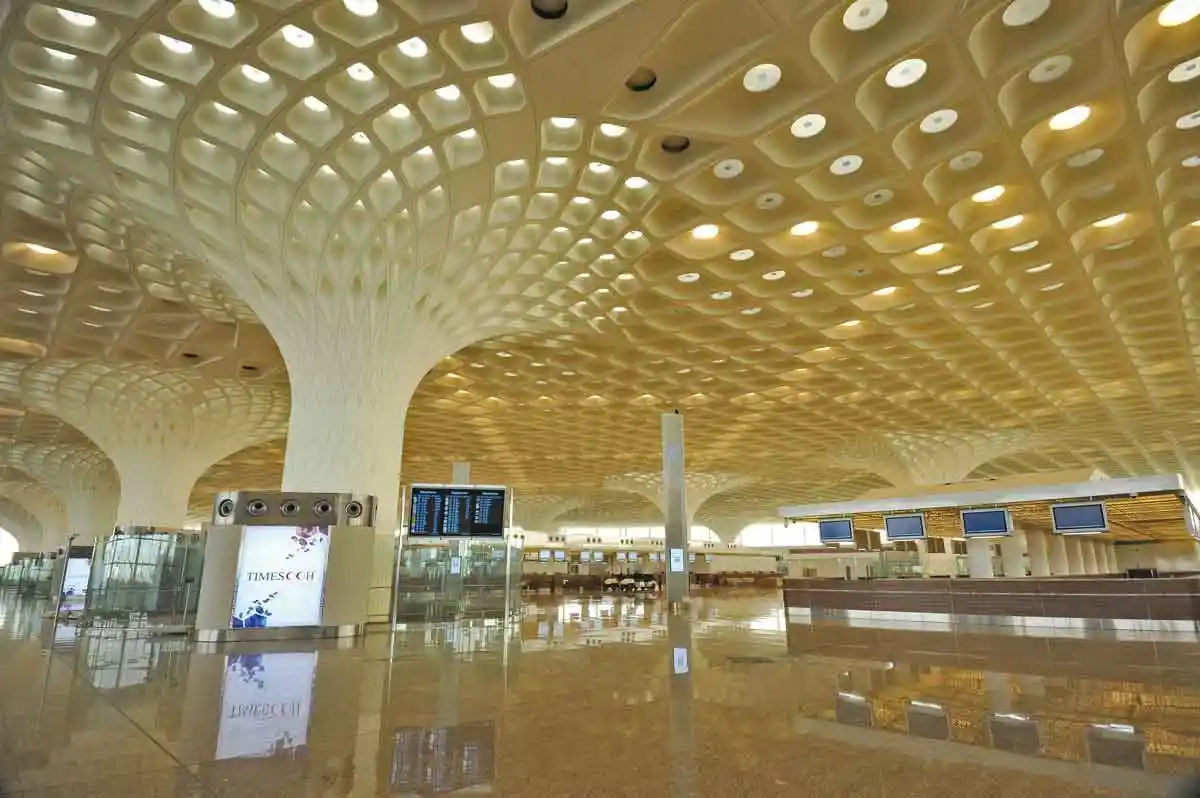
What futuristic technologies is L&T implementing in infrastructure construction?
L&T construction is one of the first construction companies in India to fully digitalize all its sites, covering almost all aspects of a construction site. L&T NXT, a newly formed vertical, will entirely focus on developing and implementing IOT, artificial intelligence and other digital solutions.
Below are the few areas where we have tried to digitalised sites.
- POWER BI DASHBOARD FOR PROCUBE – PROJECT PROGRESS
Project Progress Monitoring tool, which a mobile App to capture Daily Progress along with SC and workers details. Comprehensive interactive Dashboards and automated DPR Reports.
- IOT - All strategic assets like batching plants, concrete pumps, etc are connected to the IOT Platform enabling real time monitoring of utilization & productivity. Real time interactive Dashboard in Power BI for quick and timely decisions.
- DG sets & Smart Meters - On boarding all DG Sets onto the IoT Platform, with real time alerts on DG idling; connecting Smart Meters to the Incomer end of EB to monitor real time consumption details to avail various mentor benefits from the Electricity Board.
- Weighbridge – to capturing all weighments using the new Weighbridge Solution. Analytics on the data captured and real time anomaly detection with instant alerting through KAIZALA App.
- EHS app – to capturing all standard safety forms including Safe to Start cards, observations, near misses. App also incorporates Work Permits & Offline Functionality.
- OCULUS GO – VR headset - Safety Induction of workmen using Virtual Reality devices. The modules which are ready for use include:
- Fall from Scaffold
- Lift Shaft Opening
- Fall of material from Height
- Vehicle parked in slope
- Reversing Vehicle
- Cut-out Opening
- Ib4U – Inspect Before Use: A mobile App to inspect safety-related items such as harnesses, fire extinguishers, RCCBs, vehicles.
It also permits other combined Inspection with P&M Team.
- CONQUER – QUALITY APP V2.0
Pour Card, Material Inspection, MEP Check list, Concrete Ordering & Hand Over Take Over.
- Geospatial Technology: Drones/LiDAR based surveys to quantify Mass Excavation Qty (Cut- Fill Qty) and Stockpiles.
Currently, the following projects are being executed by L&T Construction:
- Chennai Airport expansion: Passenger capacity - 21 mppa; Built up Area- 2, 00,000 sqm
- Hyderabad Airport expansion: Passenger capacity – 22 mppa; Built up Area- 2, 50,000 sqm
- Bengaluru Terminal 2 expansion: Passenger capacity – 25 mppa; Built up Area- 2,55,000 sqm
- Delhi Airport Expansion: Passenger capacity – 20 mppa; Built up Area- 1,94,000 sqm.
NBM&CW August 2019


















